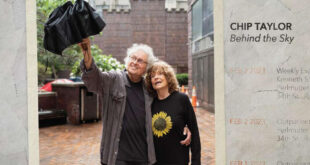Is it just me, or is the Bach-Busoni Chaconne in D Minor everywhere? Busoni’s transcription for piano of the Chaconne from J.S. Bach’s Violin Partita No. 2 is justifiably popular. It’s a technical and interpretive workout for the pianist, and a vast and sublime experience for the audience. It was also especially fitting on a night clouded by New York City’s first snowstorm of the season. Marc-André Hamelin opened his Carnegie Hall program with a sober and thoughtful performance. His approach showed an awareness that the music needs no excess. All the magnificence is there in the score.
It isn’t that he didn’t produce, where called for, the big, full sound Busoni had in mind. But from some variations he drew meanings I hadn’t sensed before – the quieter parts, the sparkling arpeggiated variation, the hymn-like major-key one. Halfway through, I had tears in my eyes. I felt sorry for the latecomers who were kindly seated at the conclusion of the Chaconne, some no doubt delayed by the dreadful weather. As long as we have music like this and master musicians like Hamelin to play it, the world can’t all be going to hell.
He drew a completely different set of colors from the piano in Schumann’s Fantasy in C Major. This piece is all about raw though artistically elevated romantic feeling, and like the Bach-Busoni it needs no dressing up. As a “Fantasy,” almost by definition it lacks consistent narrative momentum, or at least I have always found it so (as I have with others by Schumann). But Hamelin made each section sound alive with the passion that drove the composer – the love Schumann felt for the then-unattainable Clara Wieck. (They married not long after the Fantasy‘s 1839 publication.)
Hamelin’s especially sensitive reading of the first movement’s slow, sweetly soft coda made the melodic march that follows all the more striking. He gave each note its distinct meaning amid the rough-and-tumble. His fine-tuned touch shone to great effect in the quiet middle section. He accented the main theme’s powerful melodies, some of Schumann’s most memorable, with artfully wielded force (though the booming left hand threatened to overpower the melody at certain moments).
As he left the final bass note ringing long, the audience seemed to be holding its collective breath until without a silent pause he eased into the faraway final movement. Cleanly picking out the oddly angling harmonies, working the sustain pedal under the soft triplets like a sculptor, applying glancing rubatos to the motivic passages that I think of as Schubertian, he made me appreciate this music more than I have in the past. The ghostly passages that preceded the recapitulation of the “Schubertian” section sounded almost modern, and exceptionally beautiful. In Hamelin’s studiously crafted interpretation there was no failure of narrative drama.
The evening’s impressive variety of styles and eras resumed after the intermission with Alexis Weissenberg’s Six Arrangements of Songs Sung by Charles Trénet. On discovering composer-pianist Weissenberg’s 1950s recording of these delightful arrangements of French popular songs, Hamelin transcribed and recorded the set himself, and edited the score published just this year.
As if that weren’t enough variety, Hamelin closed the program with Chopin’s Polonaise-fantasie in A-flat Major and Scherzo No. 4. Showing yet another sort of union with his instrument, he sent the Polonaise-fantasie flowing from his fingers as if he were making it up as he went along. It reminded me of the way a great actor can completely lose himself in a character – making it look (sound) easy without making the audience conscious of technical skill. The fiery “Polonaise” segments sounded positively orchestral, the slower passages got their full weight, and the dynamics were elegantly balanced between the right and left hands and between the busy and calm statements. The audience’s raptness was most obvious during the rests, when hardly a breath could be heard.
The Scherzo received a light, airy reading that almost turned it into a different piece than the one I’ve heard so many times. Hamelin took fewer rhythmic liberties than many pianists do. The piece felt almost like a ballet. His poetic interpretation of the quiet middle section rendered its drama actually understated – not a word that often comes to mind with Chopin. It was revelatory.
Two encores sent us out into the icy slush, one by Schumann, the other a crowd-pleaser by Busoni, capping off one of the most memorable concert experiences I’ve had in recent years.
 Blogcritics The critical lens on today's culture & entertainment
Blogcritics The critical lens on today's culture & entertainment




